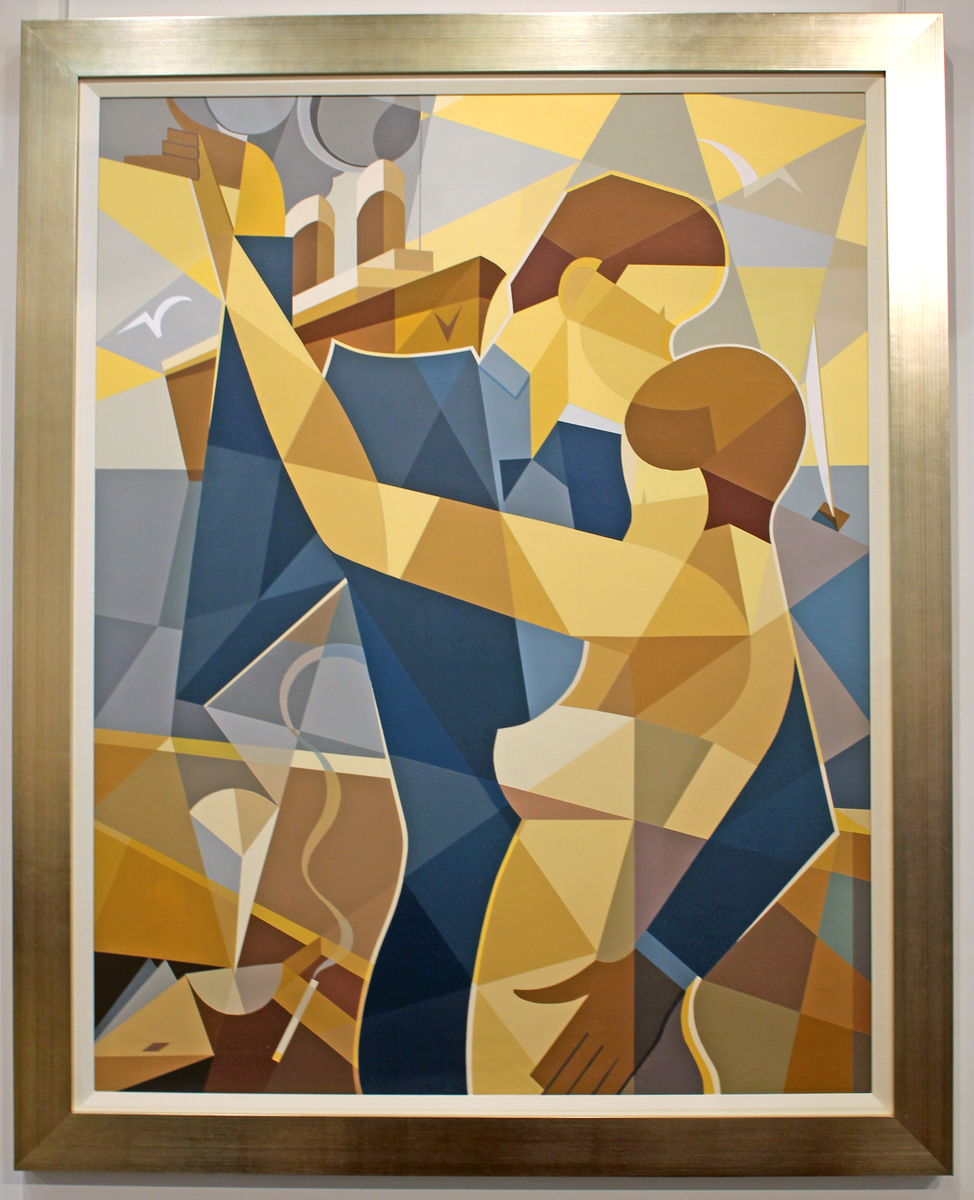

Since Cubist paintings were intended to confront traditional norms of art, it comes as no surprise that their authors often tackled similar themes in their avant-garde work. As evidenced by some of our examples below, the second phase of Cubist paintings was a lot more aware of current events, particularly the horrors of World War I. The Synthetic style kept the various angles, open forms and flowing of space between and through subjects, but it also explored the use of non-art materials as abstract signs. Besides initiating the Synthetic Cubism stage, this piece was also the first collage artwork of the movement. The second main phase of Cubist paintings emerged in 1912 when Picasso glued a piece of oilcloth to a small canvas and named it Still-life with Chair-caning. At the heart of this early stage of the movement was reduction and fracturing of objects that was followed by a realignment of those newly formed elements within a shallow space. Initial works of Braque and Picasso comprise what art historians usually refer to as the first phase of Cubism known as Analytic Cubism. Insisting that a subject must be displayed from several angles at once by utilizing geometrical components was the biggest game-changer the art world had seen so far. The creative artist duo of Picasso and Braque established a visual language of geometric planes and compressed space that rejected the conventions of illusionism and representation. Through their vocabulary of cubes, cones, spheres and cylinders, Cubist paintings abandoned perspective which had been used to depict pictorial space since the Renaissance. Representatives of this movement, namely Picasso and Georges Braque, aimed to revitalize the tired standards of art which they believed had run their course. Cubist paintings introduced the most revolutionary chapter of art history, instigating a genuine cultural awakening. Quiroz resurrects pre-Hispanic images through Cubist style and Asayaw Osattene Asante does the same with African icons, demonstrating that Cubism is still vital and living throughout the world today.Heralded as the most innovative and instrumental avant-garde movement, Cubism aggressively confronted Western core conceptions of pictorial representation. Seth Korkordi Selom and Dino Castelli find Cubism perfect to express music’s complexity and vitality. Novica artists Ney Cardoso and Wilmer Lalupu Flores use the style to explore their subjects’ minds. And others see its apparent chaos as a response to the wars of the 20th century. But to other artists, Cubism embodies engineering’s geometric precision. They conceived the style as a formal discipline of subtle balance applied to traditional subjects. Perhaps the best-known pioneers of Cubism are Pablo Picasso and Georges Braque. Possessing a sense of constant movement, the images are not symmetrical. The simplified planes and shapes can be deceptively complex in their relationship to one another.

Cubist art depicts a subject from several angles all at once, often by fragmenting an image. Born of modern times, Cubism seems uniquely attuned to the busy dynamic of contemporary life.


 0 kommentar(er)
0 kommentar(er)
